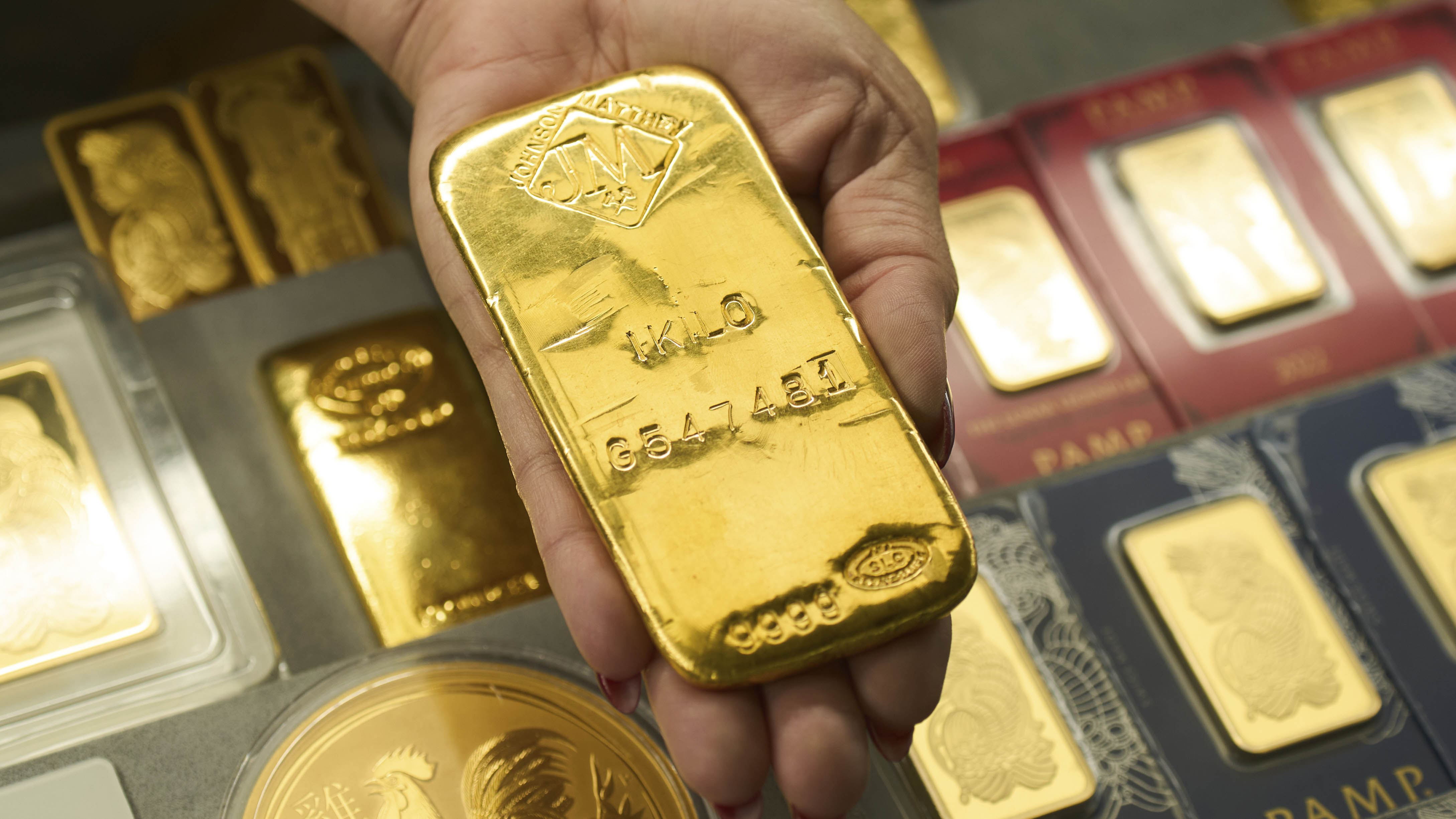Sell Gold Jewelry for Cash: Expert Tips for Top Dollar
Strike Gold: Experts Reveal How to Sell Gold Jewelry for Top Cash
Introduction: Turning Old Gold into Cold, Hard Cash
Remember that old jewelry box gathering dust in your attic? Or perhaps a drawer overflowing with forgotten gold necklaces and rings? Well, guess what? Those dormant treasures might be your ticket to a little extra financial freedom. With gold prices soaring, now could be the perfect time to consider selling your gold jewelry for cash. But before you rush off to the nearest pawn shop, let's dive into what the experts are saying to ensure you get the best possible deal. Think of it as finding the pot of gold at the end of the rainbow, but with a little insider knowledge to guide your way!
The Golden Opportunity: Why Now is a Good Time to Sell
Gold's performance has been impressive lately, reaching record highs. Fears surrounding tariffs, trade wars, and their potential economic fallout have driven investors to seek safe-haven assets, and gold often tops that list. What does this mean for you? Simply put, higher gold prices translate into more cash in your pocket when you sell your unwanted jewelry.
Riding the Wave of High Gold Prices
Think of the gold market like the stock market – when demand goes up, so does the price. And right now, demand is strong, pushing prices higher than they've been in a long time. Selling now allows you to capitalize on this favorable market condition.
Expert Advice: Proceed with Caution and Knowledge
Experts universally agree: do your homework before selling your gold jewelry. Don't just walk into the first place you see offering cash for gold. A little preparation can make a big difference in the final price you receive.
Knowing Your Gold's Value: The First Crucial Step
Imagine selling your car without knowing its Kelley Blue Book value. You wouldn't want to be lowballed, right? The same principle applies to selling gold. Get a rough estimate of your gold's worth before venturing out. This empowers you during negotiations and helps you identify fair offers.
Understanding Karats: Deciphering the Gold Code
What exactly are karats, and why should you care? Karats measure the purity of gold. Pure gold is 24 karats (24K), but it's too soft for most jewelry. Therefore, gold is often mixed with other metals to increase its durability. Higher karat gold, like 18K or 22K, contains a greater percentage of pure gold and will fetch a higher price.
The Karat Breakdown: From 10K to 24K
- 24K: Pure gold (too soft for most jewelry)
- 22K: Very high gold content, often used in coins and some jewelry
- 18K: 75% gold, a good balance of purity and durability
- 14K: 58.3% gold, common in jewelry due to its strength
- 10K: 41.7% gold, the minimum standard for gold jewelry in the U.S.
Weighing Your Options: Where to Sell Your Gold
You have several options when it comes to selling gold jewelry. Each has its pros and cons, so consider what matters most to you – convenience, price, or trust.
Pawn Shops: Quick Cash, Potentially Lower Offers
Pawn shops offer instant cash, which can be tempting. However, they often offer lower prices than other options because they need to factor in their own profit margin and the risk of fluctuating gold prices. Treat pawn shop offers as a baseline – don't necessarily accept the first offer you receive.
Jewelers: A Trusted, but Not Always the Highest, Bid
Selling to a jeweler can be a good option if you value trust and transparency. They can assess your jewelry and explain the value in detail. However, jewelers may not always offer the highest prices because they also need to consider their overhead costs.
Online Gold Buyers: Convenience at Your Fingertips
Online gold buyers offer convenience, but proceed with caution. Research the company thoroughly, check reviews, and understand their shipping and payment policies. Look for companies with a strong reputation and transparent processes.
Gold Parties: Fun, But Beware of Pressure Tactics
Gold parties can be a fun way to sell unwanted jewelry, but be wary of high-pressure sales tactics. The host often receives a commission, which can influence the prices offered. Again, know your gold's value beforehand.
Preparing Your Gold for Sale: What to Do Before You Go
Before you head out to sell your gold, take a few steps to prepare. This will help you get the best possible price and avoid any surprises.
Sorting and Cleaning Your Jewelry
Sort your jewelry by karat. This will make it easier for the buyer to assess its value. Gently clean your jewelry to remove any dirt or grime. This will improve its appearance and make it more appealing.
Gathering Documentation: Certificates and Appraisals
If you have any certificates of authenticity or appraisals for your jewelry, bring them with you. This documentation can help prove the value of your items, especially if they contain gemstones.
Negotiating Like a Pro: Getting the Best Price
Don't be afraid to negotiate! The initial offer is rarely the best offer. Be polite but firm, and be prepared to walk away if you're not happy with the price.
Knowing Your Walk-Away Price
Before you start negotiating, decide on a minimum price you're willing to accept. This "walk-away price" will prevent you from selling your gold for less than it's worth.
Getting Multiple Quotes: Shop Around for the Best Deal
Don't settle for the first offer you receive. Get quotes from multiple buyers. This will give you a better understanding of the market value of your gold and help you identify the best offer.
Beware of Scams: Protecting Yourself from Fraud
Unfortunately, scams exist in the gold-buying industry. Be cautious and protect yourself from fraud.
Researching Buyers: Checking Credentials and Reviews
Before entrusting your gold to any buyer, research their credentials and check online reviews. Look for companies with a good reputation and a history of fair dealings.
Understanding Contracts and Payment Policies
Read the contract carefully before signing anything. Make sure you understand the payment terms, shipping policies (if selling online), and any fees or commissions.
Alternative Uses: Beyond Selling for Cash
Selling isn't your only option! Consider other uses for your unwanted gold jewelry.
Repurposing and Remodeling: Giving New Life to Old Gold
Consider repurposing your old gold jewelry into new pieces. A jeweler can melt down your gold and create custom-designed jewelry that reflects your personal style. This is a great way to keep sentimental value while creating something new.
Gifting to Family Members: Passing on a Legacy
Instead of selling, consider gifting your gold jewelry to family members. This can be a meaningful way to pass on a family heirloom or provide a valuable gift to loved ones.
Tax Implications: Understanding the Rules
Selling gold jewelry may have tax implications. Consult with a tax professional to understand your obligations.
Capital Gains Taxes: Reporting Your Profits
If you sell your gold for more than you originally paid for it, you may be subject to capital gains taxes. Keep records of your purchase price and sale price to accurately report your profits.
Conclusion: Making the Right Decision for You
Selling gold jewelry for cash can be a smart move, especially with current market conditions. Remember to do your research, understand the value of your gold, and shop around for the best offer. Whether you choose to sell, repurpose, or gift your gold jewelry, make an informed decision that aligns with your financial goals and personal preferences. It's your gold; take control of its destiny!
Frequently Asked Questions
Q1: How do I determine the karat of my gold jewelry if it's not stamped?
A: You can take your jewelry to a jeweler or pawn shop for testing. They often use acid testing kits or electronic gold testers to determine the karat of the gold.
Q2: What happens to my gold jewelry after I sell it?
A: Most gold buyers melt down the jewelry and refine the gold. The refined gold is then used to create new jewelry, coins, or bullion.
Q3: Is it better to sell gold jewelry with gemstones or remove the stones first?
A: It depends on the value of the gemstones. If the gemstones are valuable, it's often better to remove them and sell them separately. However, if the gemstones are small or low-quality, the buyer may offer a price for the entire piece.
Q4: How can I protect myself from getting ripped off when selling gold online?
A: Choose reputable online buyers with transparent processes and secure shipping methods. Read reviews carefully and be wary of companies that offer unusually high prices. Always insure your shipment for the full value of the gold.
Q5: Should I sell my gold jewelry all at once, or sell it in smaller batches?
A: Selling all at once might be more convenient, but selling in smaller batches allows you to monitor price fluctuations and potentially get better deals at different times.


